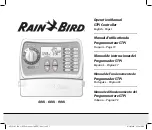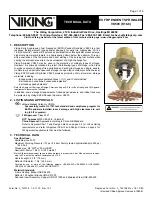
User's Guide MADIface XT
© RME
51
22.2 Technical Description and Usage
In the analog domain one can connect any device to another device, a synchronisation is not
necessary. Digital audio is different. It uses a clock, the sample frequency. The signal can only
be processed and transmitted when all participating devices share the same clock. If not, the
signal will suffer from wrong samples, distortion, crackle sounds and drop outs.
AES/EBU, SPDIF, ADAT and MADI are self-clocking, an additional word clock connection in
principle isn't necessary. But when using more than one device simultaneously problems are
likely to happen. For example any self-clocking will not work in a loop cabling, when there is no
'master' (main clock) inside the loop. Additionally the clock of all participating devices has to be
synchronous. This is often impossible with devices limited to playback, for example CD players,
as these have no SPDIF input, thus can't use the self clocking technique as clock reference.
In a digital studio synchronisation is maintained by connecting all devices to a central sync
source. For example the mixing desk works as master and sends a reference signal, the word
clock, to all other devices. Of course this will only work as long as all other devices are
equipped with a word clock or sync input, thus being able to work as slave (some professional
CD players indeed have a word clock input). Then all devices get the same clock and will work
in every possible combination with each other.
Remember that a digital system can only have one master!
But word clock is not only the 'great problem solver', it also has some disadvantages. The word
clock is based on a fraction of the really needed clock. For example SPDIF: 44.1 kHz word
clock (a simple square wave signal) has to be multiplied by 256 inside the device using a spe-
cial PLL (to about 11.2 MHz). This signal then replaces the one from the quartz crystal. Big
disadvantage: because of the high multiplication factor the reconstructed clock will have great
deviations called jitter. The jitter of a word clock is multiple times higher than the one of a quartz
based clock.
The end of these problems should have been the so called Superclock, which uses 256 times
the word clock frequency. This equals the internal quartz frequency, so no PLL for multiplying is
needed and the clock can be used directly. But reality was different, the Superclock proved to
be much more critical than word clock. A square wave signal of 11 MHz distributed to several
devices - this simply means to fight with high frequency technology. Reflections, cable quality,
capacitive loads - at 44.1 kHz these factors may be ignored, at 11 MHz they are the end of the
clock network. Additionally it was found that a PLL not only generates jitter, but also rejects
disturbances. The slow PLL works like a filter for induced and modulated frequencies above
several kHz. As the Superclock is used without any filtering such a kind of jitter and noise sup-
pression is missing.
The actual end of these problems is offered by the
SteadyClock
technology of the MADIface
XT. Combining the advantages of modern and fastest digital technology with analog filter tech-
niques, re-gaining a low jitter clock signal of 22 MHz from a slow word clock of 44.1 kHz is no
problem anymore. Additionally, jitter on the input signal is highly rejected, so that even in real
world usage the re-gained clock signal is of highest quality.
This is especially true when extracting the word clock out of a MADI signal. Caused by the
MADI format itself, such a signal will have around 80 ns of jitter, which is reduced to about 1 ns
by SteadyClock.
Summary of Contents for MADIface XT
Page 7: ...User s Guide MADIface XT RME 7 User s Guide MADIface XT General...
Page 36: ...36 User s Guide MADIface XT RME...
Page 37: ...User s Guide MADIface XT RME 37 User s Guide MADIface XT Usage and Operation...
Page 44: ...44 User s Guide MADIface XT RME...
Page 45: ...User s Guide MADIface XT RME 45 User s Guide MADIface XT Inputs and Outputs...
Page 53: ...User s Guide MADIface XT RME 53 User s Guide MADIface XT Stand Alone Operation...
Page 56: ...56 User s Guide MADIface XT RME...
Page 57: ...User s Guide MADIface XT RME 57 User s Guide MADIface XT TotalMix FX...
Page 59: ...User s Guide MADIface XT RME 59...
Page 92: ...92 User s Guide MADIface XT RME...
Page 93: ...User s Guide MADIface XT RME 93 User s Guide MADIface XT Technical Reference...
Page 106: ...106 User s Guide MADIface XT RME...
Page 107: ...User s Guide MADIface XT RME 107 User s Guide MADIface XT Miscellaneous...
















































